
There is more to hunting than just shooting animals. Jeff Vance, the head of state for Bucks of Wisconsin, talks about how he manicures and grows bucks in the land that he is hunting in Minnesota. He shares how he captures one mature game which he describes as a magical experience. He then explains what Bucks of America is and how they started the company. Now, the company is developing products that make hunting and other outdoor activities much more convenient and enticing. Jeff introduces the different products they have on their store and how they keep everything American made by hiring local talents. Moreover, besides running a company, he also enjoys hunting with his wife. Jeff then shares his opinion as to why he loves hunting and why he thinks it is an enchanting activity.
—
Listen to the podcast here:
Extraordinary Explosive – Minnesota Mature Buck – Jeff Vance
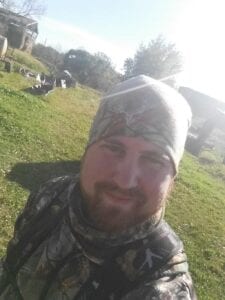 I’m heading to La Crosse, Wisconsin. I’ve got a fondness for La Crosse, Wisconsin because I attended the University of Wisconsin-La Crosse, played a little football, then a little track, met my wife of 48 years. I’ve got a good friend there, Jeff Vance. Jeff is the Head of State for Bucks of Wisconsin, and it’s a division of Bucks of America. Jeff, welcome back. Jeff was number 160-something a number of years back. Jeff, I’m excited to have you here and I’m sure looking forward to spending a few days hunting with you.
I’m heading to La Crosse, Wisconsin. I’ve got a fondness for La Crosse, Wisconsin because I attended the University of Wisconsin-La Crosse, played a little football, then a little track, met my wife of 48 years. I’ve got a good friend there, Jeff Vance. Jeff is the Head of State for Bucks of Wisconsin, and it’s a division of Bucks of America. Jeff, welcome back. Jeff was number 160-something a number of years back. Jeff, I’m excited to have you here and I’m sure looking forward to spending a few days hunting with you.
I’m looking forward to it and it’s great to be back, Bruce.
If you don’t know, I visited with Mark Hammer, I think it’s a state record of Ohio. It’s an absolute monster and it’s called the Hammer Buck. What’s been going on?
Here in La Crosse, it’s been quite a great year. Fishing has been on top point, we just had the Bassmaster Elite come through here, which was awesome. It provided a lot of challenges for the elites. Kevin VanDam was there, Ish Monroe won the tournament. He hit consistently sixteen pounds a day, which brought him in. This tournament, they will accept smallmouth and largemouth bass. If you’re a bass fisherman, you are aware that some tournaments are straight up only largemouth and others are smallmouth, and there’s occasionally where you have both of them. They were talking about that they were hitting so many bowfins, which are a unique looking fish, massive fillets. A lot of pikes. A lot of the guys were saying they were going through a lot of frogs because that’s what was hitting. What was going on is that we had a lot of rain. During the entire tournament, the water level rose four feet by the end of the tournament. Even Kevin VanDam, a veteran, took 31st place. As you can tell, it was not an easy tournament for anybody.
Where do they fish? All parts of the river or above?
They go as far down as Lock & Dam #6, as far up as #8. You can fish a lake in Alaska, you can fish the Mississippi River, but you have to stay on the Wisconsin side of the Mississippi River there. You can fish all along the area there. If you go to their website, you can see their map and where they can and cannot fish, but it was quite the thing. They started off with 107 boats and they ended up with twelve at the end of the whole tournament.
Do the boats get eliminated?
Yes. If you don’t reach a certain amount of point, then you eventually fall off. They have everybody join in, next day they drop it down to 50, then they drop you down all the way to twelve, and then you just have the final twelve to participate. You get prizes, winnings and stuff like that. You listen to the guys talk about what they use and how they conducted themselves and everybody loves it. This is a permanent stop on the Bassmaster Series. They come out every couple of years.
Did you fish in the tournament?
I had to work. It would be fun though.
Tell me about the buck you finally got, a nice mature buck on the Minnesota side right across the river. Let’s start off talking about that buck and how you’ve manicured and grown bucks over in the land that you’re hunting in Minnesota.
The buck that I shot was one that I’ve been tracking for a couple of years. Last time was the first time I’d actually seen him out in the open. It was late October when I first caught him, it was early rut at that time because it got cold earlier in the season than it did last time. We were in the mid-80s all the up until pretty much October 1st. It was a really hot season for us here in the Upper Midwest. When I saw him, I watched him come down a hill. I’d call this guy probably at least 100 and some odd yards out, that was just bleating. Everybody reading this knows what bleating is. I was just doing a young immature doe, which is three bleats every ten minutes. I did it like clockwork.
What does it sound like?
It’s like a moan. I’m not good enough to do it, I do everything through an instrument, so I am not going to embarrass myself too bad with that.
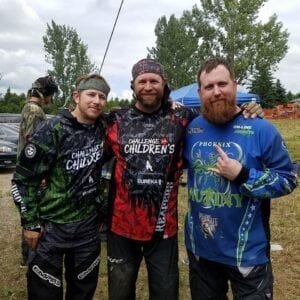 It’s just a can.
It’s just a can.
I don’t use a can myself because I can’t get the controlled bleats, because they have to be short. The can, if you’re not careful with it, because it’s got a long passage from top to bottom, so I’ll use a mouthpiece. That right there allows you to control the pitch, the depth, the length of it. You’re more in control. It’s just three short bleats every ten minutes and I managed to call him in. Once I got him in there, he got his sense on some does and he spooked all three of them out. I was going to Alicia, it’s like, “I just wish one would take.”
Was Alicia with you?
Yes. How we worked it out in the ground blind is that it was my turn to hunt and she was my range finder, so she had the range finder and everything like that. She tracked him in and I just slowly adjusted. I use a single pin. Those who use a single pin for whitetail understand how difficult it is because they change so rapidly, especially when they’re chasing something. As he came in, she ranged him several times but then she moved. The series I hunt in Minnesota, for those who don’t know, if you hunt in three series in Minnesota, they have 100 series, 200 series and 300 series. The 300 series is where you’re required to have four points on one side. At the time, he only had three and two. I had to pass on him. I knew he wasn’t going to be a big rack, but his body was massive. The farmers that own both sides of where I hunt, they use corn, soybean and they rotate depending on what’s going on.
One guy, we’ll hunt at his house, has two small fields where he rents out to a local farmer where he just plants corn every year. It’s not designed to be sold, it’s just as a food plot. It has helped me out because it keeps the deer on my property. With water running through it, it keeps everything in a very nice atmosphere for them, it’s a very nice place. There are only a couple people that hunt in a 400 or 500-acre area and I only have a small sum of the whole thing. Where they come out, they funnel and it’s got a nice little habit. Getting back to the deer. I had to let him pass. Fast-forward to November 5th of 2017, it was a nice cool day, started my day at 5:00 in the morning. I first sat in the ground blind and tried calling from there. I didn’t know where they were going to be at. The deer have been spotty because it was just finishing, it was right at the beginning of the first shotgun season.
Minnesota, they run it parallel with archery. It was during the rut. I wasn’t quite sure because there’s a lot of gunfire going on, so I wasn’t going to know how to pattern the deer or what’s going to happen. I picked my spot where I normally sat from a ground blind because I have a wide open field, so I can see them come from up to 300 yards away, depending on how they’re going to be traveling that day. If they’re going from their bed to food or bed to water. Alicia and I were sitting there. I ended up calling something in, they came up behind us, didn’t even know where they were. They didn’t smell us, they didn’t know us until they were there. Our scent control is on point and they saw us when we came around one of the larger trees. We ended up having to move later for the evening set. This happened right around 4:00 in the afternoon making a long, mature doe sound to bring them in.
If you build a team then the rest will follow. It may not be easy in the beginning, but hard work will persevere. Share on XThey have a distinct tone because when they’re in heat, the mature lets out this anywhere between 20 to 30-second bellow to allow them to be like, “I am here to reproduce.” They don’t want to monkey around, it’s like, “I’m ready to go.” That’s what I use to bring them in. I first spotted him at 40 yards out. This was at 4:00, mind you. I am fighting against the clock before it gets too dark outside. It took me over a half-an-hour to bring him within range. He comes in through the field where I’ve seen him eat before. I was like, “He’s sitting there, I’ll leave him alone. I bleat a little bit just to keep his attention to keep him coming in.” He decides to cut off behind some trees and into some sagebrush, which is really thick, so we can’t see anything through it. Forty yards out I’m not going to take a shot because I’m afraid that I’m not going to be able to hit the target.
As I’m calling it, then I lose sight of him multiple times. It wasn’t until he actually was able to cross onto the property that I have permission to hunt on. When he walked into the woods, he was on the neighbor’s property, which I don’t have permission to hunt. He’s not necessarily anti-hunter, he doesn’t want anybody hunting on his property, which is understandable. Everybody has their own standards. Once I finally got him into sight, that’s when it was game on. I drew on him twice, but he moved each time after I was at full draw. He changed his position, which ended up changing where I had to place my pin. I sighted him in at 32, then I had to move it to 30, then I had to move it to 28, then I had to move back up to 30. Working with the single pin I learned the hard way it’s best to have a multi-pin operation when you’re shooting within 30 yards. As I got him to where I needed to be and I got him stationary for a long enough time where he opened up a good shot over the right-hand shoulder where I know I’d be able to put it into his lungs.
Everything happened and it was magical. It’s like the adrenaline rushes through your hands, the adrenaline rushes through your body, you have to control that energy. It’s a lot of intensity. Those who have harvested elk, antelope, whitetail know the adrenaline dump that comes along with having an animal within harvesting range. Luckily for me, the adrenaline slowly wore off by the time I was able to release the arrow and I was successful. Double lung and he reared up, took off, ran, went into somebody else’s property I unfortunately didn’t have permission to walk in it, so I had to wait until the following day. I came back the following morning, bright and early, realized that it was going to be a challenge because I hit him in a spot where there was no blood. I was like, “This is going to be a challenge.” I started back from point A and I followed the tracks because he’s a big boy. Within 20, 30 minutes of looking I was able to find him. He was within 40 yards from where I shot, double lung. It’s probably going to be my all-time favorite thing to do. The cavity fills up with blood, they stop, they don’t have a whole lot of endurance after that because they don’t have anything to pump oxygen through their body. I’m an organ fan, so I like eating the heart. It was a win-win situation for me.
Why no blood though? The arrow didn’t come out?
It wasn’t a complete pass-through. It went through the rib cage, up over the shoulder blade, but it was high enough up where it wouldn’t be able to spread out, so I didn’t hit any major arteries or anything like that. I was lucky enough to spend a lot of time practicing that I knew where I put it at was going to be a lung shot. I’ve got to cross my fingers that it was going to be a quick find, because I didn’t know how long he’d run for if I didn’t hit him in the lungs in the right spot.
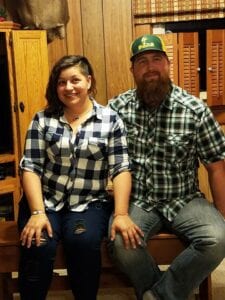 Was this out of a tree stand? Was this out of a hang-on or a ground blind?
Was this out of a tree stand? Was this out of a hang-on or a ground blind?
This was out of a tree stand, this was out of a hang-on, it was a double one. I’ve learned that when you’re hunting out of a tree stand, a single doesn’t give you the flexibility. With having a double one, it gives you the extra room, a place to put your bag, your gear and stuff like that and a place to have a nice little lunch if you’re going to be up there all day long. It worked out great. If I h ad somebody else in the stand, I would never have been able to pull off the shot.
I have to hunt now in double-ladder stands, I don’t do hang-ons anymore or ground blinds.
I myself have found that I’ve shot most of my deer in the past on the ground. That’s just one of those things where randomly I’m going to get up in the seat, sit down, start calling and the fates are on my side. The hard work, the determination, the cold weather and being able to be comfortable all day long from start to finish. It was a great, rewarding experience, I’ve been able to provide several cook-offs for several of my friends, I gave some venison to a friend of mine in Arizona for her wedding gift, which they were all floored about because they don’t get whitetail down there in Fort Mohave, Arizona. This deer has been quite a blessing for me and I was able to share the blessing with a lot of people.
What broadheads do you use?
It is designed, owned and operated by Veteran. His name is Matt Futtere. The company is based out of Texas. The gentleman is very all-American made, so all the components and all the assembly happen in America. Oddly enough, the cool part is that the assembly plant is in Sparta, Wisconsin, so it’s about 30 miles away. Those who know Wisconsin terrain and the winters we deal with, that drive is quite treacherous when the winds are bucking west. I work for a good company here in town. We work with service members, veterans, MEPS. This company provides its own reward, plus it’s in walking distance, so it has its perks.
I’m thinking of Colorado going over 10,000-foot passes with whiteout conditions.
 We have our fair share here in Wisconsin, so don’t consider yourself lucky.
We have our fair share here in Wisconsin, so don’t consider yourself lucky.
I know. I lived there for a long time. Tell me how you’ve developed this piece of property. You’re growing deer. How many four-and-a-half, five-and-a-half-year-old deer do you think you’re going to have on your hit list?
After I shot this buck, I determined that this was from what I’ve heard is a commonly coined term, called a bully buck where they don’t have a big rack but they’re massive. They throw their weight around. After I harvested him, I found four new bucks that I didn’t even know I had. Based on the footage I had, I should probably have one five-and-a-half, six-year-old buck and I should have three two-and-a-half bucks, two-and-a-half-year-old bucks. There should be one or two sitting right around that four-and-a-half-year-old point in time. It’s going to be exciting to see what’s all going to be happening because I put out some mineral licks because I want to control the flow of the deer. This way I can get a head count, see where my does are at, see how many I have for that to have that nice balance like a 2:1 ratio, 1:1 ratio. I at least try to do the best I can for quality deer management.
As far as the shotgun hunters, do you guys shotgun the properties you hunt or not?
No, knock on wood. The area that I hunt, there are only two of us that hunt it. Technically, there are three of us. It’s myself, Alicia, and then there’s another guy that owns another piece of property about 300 yards from where my stand is and he only bow hunts. There is a guy that hunts across the street that shotgun hunts, but he can’t hunt on our side, on the other side of the road. The deer has to go from where I’m at to where he’s at. It actually helps me in my favor. As long as I keep up a good safe haven for them and the water and everything stay clean, then I always have the first crack at it before he does. In the area, there’s not a whole lot of hunters, so it works great.
Are you hunting bluff country or are you hunting more agricultural? Tell me about the terrain.
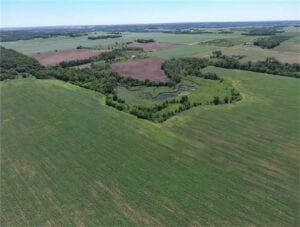 It’s rolling hills. We’re only about 70 miles from the Driftless Area here in Wisconsin. As you go from Rochester, Minnesota towards La Crosse, that’s when you start experiencing the rolling hills. Where I hunt is pretty much the beginning of the rolling hill process, then you get into bluff country, which would be your Winona, Caledonia, La Crescent and that area right there, which is still 60 miles out. It makes things easier for when you harvest something, you can drive either right up to it if the ground is hard enough or you can drag it out so you don’t have to worry about going through some heavy brush.
It’s rolling hills. We’re only about 70 miles from the Driftless Area here in Wisconsin. As you go from Rochester, Minnesota towards La Crosse, that’s when you start experiencing the rolling hills. Where I hunt is pretty much the beginning of the rolling hill process, then you get into bluff country, which would be your Winona, Caledonia, La Crescent and that area right there, which is still 60 miles out. It makes things easier for when you harvest something, you can drive either right up to it if the ground is hard enough or you can drag it out so you don’t have to worry about going through some heavy brush.
I’m trying to think because I drive by 90. I come off 35, then take I-90 to La Crosse, and then up that way or go to Winona and go up that way. I travel that country a lot and some of it is pretty wide open.
It is especially if you go up towards the south, but I’m on the north side of I-90. It’s the Stewartville-Rochester exit there, so go take 35 to 90, puts you in Albert Lea. That’s about 40, 50 miles from where I hunt from Rochester. I hunt southeast of Rochester.
I look forward to getting out there, spend some time with you and hanging out in the blind, that’s for sure. Let’s switch it up and talk about Bucks of Wisconsin and your role and what you’re doing there. It’s a division of Bucks of America. Tell people about what that company is all about.
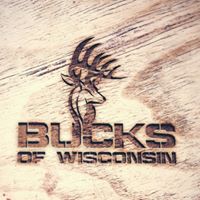 Bucks of America is a brainchild of Cody Neer. This came off from his success with Bucks of Nebraska. He started that company a few years ago. He got to the point where he was making enough money just off of that state alone that he wanted to expand to the next level, he just wasn’t sure how. Him and Zachary New got their heads together and they realized that they have an opportunity to make something huge. This has all happened in the last few years. We didn’t go live until a couple of years ago, until when we actually had a rolling product and such, when I got involved with the whole process.
Bucks of America is a brainchild of Cody Neer. This came off from his success with Bucks of Nebraska. He started that company a few years ago. He got to the point where he was making enough money just off of that state alone that he wanted to expand to the next level, he just wasn’t sure how. Him and Zachary New got their heads together and they realized that they have an opportunity to make something huge. This has all happened in the last few years. We didn’t go live until a couple of years ago, until when we actually had a rolling product and such, when I got involved with the whole process.
A year later, we got the foundation for where we can have our distribution and everything. Our whole goal thing was that we work with licensing from colleges that would allow us to manipulate the logos with antlers on it. We’re going to be making a change due to licensing and the headache that we deal with and not a big profit margin on it, we decided to move away from it. What makes Bucks of America unique is that we do something we call drop-shipping, which means that we don’t have supply. We make it once it gets ordered. We have a central location in Nebraska, which allows us to have a faster turnaround time and a quicker delivery for the product.
We have about twenty Heads of State. A Head of State is a person that’s been hand-selected by Cody Neer and Zachary New that they believe is competent, has the right mindset to take this company to the next level. Our whole idea is that we wanted to take our passion, put it into revenue and be able to make money off it to where we’re not working a 9 to 5 where we have residual income coming off of a dot-com base. With our new focus is that we’re going to be bringing in new talent, which means that we’re going to be increasing our website catalog instead of strictly selling hats, cozies, hoodies, shirts. We’re going to branch into gear, which is camo, broadheads, scent control, anything like that. We want to work with local people. Find my information through Bruce and hit me up if you have a product that you think would be a good fit for our website because we want to promote local.
Hunting is an art. It is not an easy thing to deal with. You need to have dedication. Share on XHow would they do that? Give me an email address or Facebook, Twitter or Instagram account.
Any of them. Bucks of America any state has all platforms, so it won’t be hard to reach out to us. The way we have it set up is if you work here in Wisconsin, you make your products here, it’s all locally grown or manufactured, let us know and then we’ll set you up. We can highlight the people that are based on that state with the state they’re associated with. This way we can show that everything is American-made, everything is staying inside the country. This way we can help build their company, build their job foundation and trying to be a win-win situation. We have found that if you build a team, then the rest will follow. It may not be easy in the beginning, but hard work will persevere.
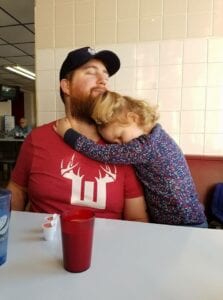 Let’s talk about hunting with your wife. She’s a sweet gal and a nice gal. Let’s talk about how that’s working. Sometimes guys and their wives doesn’t work and other times it works great. Let’s talk about your hunting relationship with your wife.
Let’s talk about hunting with your wife. She’s a sweet gal and a nice gal. Let’s talk about how that’s working. Sometimes guys and their wives doesn’t work and other times it works great. Let’s talk about your hunting relationship with your wife.
It is actually quite a blessing because we both have the same mindset on how we want to conquer our seasons. We’ve found that depending on what we’re setting up in, if we’re setting up in a tree stand, a ground blind or we’re sitting and we spot and stalk, we work together as a team. We take turns. If it’s my turn to go out hunting and if we’re sitting in a ground blind, then she’ll be the one that will be the rangefinder. If it’s her turn, then it’s my turn to the binoculars and the rangefinder. This season here, we want us to have our own space. She was not necessarily novice, but she had some rough edges and spending a lot of time with me learning how to call, what to use and how to look at the landscape, the barometric pressure and the moons. She was able now to have her own foundation where she feels that she could be successful enough without having a partner in the stand. We’re going to both be even with it. We don’t have very big egos. We’re blessed to get out there and hunt and have a property to hunt on, because there are some people out there that don’t have the same luxury as we do. If she happens to have this beautiful buck walk in front of her, go ahead and take it. No matter what, we’re both going to eat the meat.
It’s good eating.
I got her own bow, her own camo gear and stuff like that. I didn’t pay for this. I made her do it. This was her first time actually buying high-end equipment and buying this camo and stuff, I want her to have that ownership. If you buy it for somebody, they’re not going to have the same appreciation. It’s something that I’ve learned from my own thing. The stuff that’s given to you, you don’t necessarily take it for granted but it doesn’t have the same ownership. If you buy it yourself, then you’re going to take care of it, you’re going to treasure it and you’re going to put the energy into using it.
How many years has she been out hunting?
 With me, just a few years. Hunting overall off and on, consistently four or five years over her life span. It’s like you’ve got to include travel, moving, college. It didn’t always work in her schedule.
With me, just a few years. Hunting overall off and on, consistently four or five years over her life span. It’s like you’ve got to include travel, moving, college. It didn’t always work in her schedule.
You have a couple of kids too?
We have one. You met her when we went to the Iowa Deer Classic. We went down to the archery range and we all shot. Working with the little one and watching her face light up once she finally gets an arrow to stick in a target is heartwarming. “I want you to be proud of me, Dad.” I’m not going to put that pressure on her, I want her to be happy. I want her to love it as much as I do. If you force it down somebody’s throat, they’re going to build resentment for it. You’ve got to let them find that love for it. I’m looking forward to bringing her out to the trail cams and walking her through those and spending time reading, watching them, teaching her and stuff like that and go from there. I bought her a bow here. When you’re that three to five-year age, you don’t know what eye is going to be dominant. Watching her, it’s like, “Okay,” because I have what they call an AccuBow. It’s awesome archery equipment for training, especially if you don’t have the time to get to the range. Watching her use it, I’ve got to focus that she’s going to be left-handed and work with her on that.
We talked about Minnesota. Do you hunt anything in Wisconsin at all?
I do. I hunt public land when I have the time to get out there. With my active lifestyle, I don’t always have an opportunity to go. Sometimes I’ll go out to Minnesota or it all depends if I’m hunting with people or if I’m hunting by myself.
 Up north in Buffalo County, Trempealeau bottoms, along the Trempealeau River, there are a lot of places. There is a lot of public land in Wisconsin. Typically if you get a mile away from the parking lot, you’re by yourself.
Up north in Buffalo County, Trempealeau bottoms, along the Trempealeau River, there are a lot of places. There is a lot of public land in Wisconsin. Typically if you get a mile away from the parking lot, you’re by yourself.
Which is nice to have. On top of that too, I’m not sure if you knew this, but La Crosse actually has metro tags that you can hunt here inside the city.
At the golf course?
At the golf course, at a couple of different parks. You have to get tested to be able to do it because they want to make sure that you’re going to be able to harvest the animal successfully and not have them run out in the streets and stuff like that. They have 75 tags they give out and with buck, doe, they have public and private. Up along the bluffs on Highway 16, they have animals crossing down there. For example, I was heading out on Alaska and I saw three deer, but the only thing is the guy that owns the property to access that area, he won’t let anybody hunt on it.
That’s why the deer are there. There are some big bucks along the La Crosse River. I can remember the days that I lived there. I never killed one, I never got one, but we used to duck hunt on the La Crosse River in my canoe and we would see dandy, gorgeous bucks way back when.
It still holds true now. Wisconsin produces some of the biggest bucks consistently year-round. They may not be any record holders, but we produce a lot of consistent bucks, that 180, 190, 200 class. You go onto Legendary Whitetails and on their blog form, they’re always doing some type of write-up. That’s what I’m striving to do myself, and I’ll go through and I’ll find Wisconsin residents that are a part of my friends list on Facebook or people that follow me on Instagram or Twitter and I give them a shout-out because they put the energy, the time, the cultivation of it. It’s an art. It’s not an easy thing to do, and you have to have dedication for it. It’s one of those things where it’s our responsibility on multiple platforms to show the non-hunters, the people that have an on-the-fence idea about how hunting is a good impact on the whole society. If you keep on showing positive aspects of it and you keep your ego in check and you don’t get on anybody’s case about what they’ve harvested, as long as it’s legal, it doesn’t matter.
I was thinking of the Bluff Country and Grandad Bluff overlooks La Crosse. Bluff Country is tough hunting. It’s very steep. You get on top and the farmers work all the fields on top, but it drops down significantly. I can remember hunting some of those bluffs and as a young kid it was even a workout.
I’m starting to notice my knees are not the best shape, so I tend to look for more of a flatter plateau where they’re coming to eat, someplace where I can easily get in and out. I don’t want to be in a tight spot where I end up doing some damage to my knees and not be able to get out. I don’t know if you’re aware of this though, this is the first time that the Rocky Mountain Elk Foundation opened up a season for Wisconsin DNR.
Up at Clam Lake?
Yes, exactly. They’re releasing ten tags.
Did you apply?
No, I knew I wasn’t going to get it. I have better luck playing the lottery.
You’ve got to apply. The thing about the Clam Lake herd, and it’s a debate that will go on forever, is the wolf population up there and the predation for age recruitment of the calves and stuff. They’ve been very successful and it’s neat to hear them bugling in the fall up in Wisconsin. People don’t realize Daniel Boone killed elk way out East in the Appalachian Mountains in Appalachia and all the way through the Great Plains because the elk are very vocal. One reason, because they live out in the prairie in the Great Plains, as well as in the mountains. Let’s give a shout-out to the Rocky Mountain Elk Foundation, the preeminent conservation group that has restored elk to many of their traditional ranges across the United States. Hats off to RMEF and all the volunteers and the great work they’ve done. Talking about in the past, what’s the one big thing that you wish you knew a few years ago that now, “I sure wish I knew that a few years ago?”
It’s calling. Learning how to bleat and grunt is something that if learned that years ago, that would be great. Hunting with people that actually knew how to grunt. I hunted with a guy for a period of time, but we no longer are on speaking terms because he didn’t know how to call, so I was learning from the wrong person. He still doesn’t know how to call.
You’ve got to practice.
It’s listening also to the best hunters on the market. Lee and Tiffany, Ted Nugent, Cameron Hanes. Listening to these guys, what their experience is and how they go after whitetail. They are chock-full of knowledge.
I’ll give a shout-out for Art Helin that lives down south of Madison. He did an episode on deer vocalization and he was really good. I know Art, so I’ll give him a shout-out. You have to practice and you have to spend time in the woods and just do nothing but listen. You’ll be amazed, especially during the rut, what you’ll hear. I love to rattle up deer.
Listening to one of Mark Hammer’s episode with you, he was talking about he’s working his own call, about how to make the call, the rattle sounds much further away. He did that little blurb from his machine. That is awesome. I’ve actually intensified my review watching him talk and expressing how to rattle properly. That’s something I have not learned how to accomplish successfully. Since I’m able to learn, I’m pretty confident in my calling skills, the rattling is next.
Let’s work on that when I see you. That will be fine. I’m not going to guarantee anything. Rattling, to me, it’s all about timing.
Yes, pre-rut, post-rut, all that stuff. He broke it down really well. It’s a challenge, it’s science.
You have to do it at the right time. It gets interesting and I can remember sitting on a stand in Buffalo County one morning. It was stupid. I had one Pope & Young buck come in, the big buck. He was over 100 yards away and he didn’t want to come in. His buddies did and it was probably the best morning I ever had rattling. That was pre-rut. It was pre-Halloween. I was amazed. I wish I had a video camera because I went back to the house and we’re talking it up with the boys and they’re calling BS on me and all that stuff. I said, “Whatever.” I had bucks just bedding within 50 yards of my tree stand. It was the craziest thing. Anyway, enough about me and more about you. Why do we love hunting? What’s the magic about hunting?
I think it comes down to storytelling because we like to tell stories, and the only way to do it is actually being out there to do it. I’m young enough/old enough where I didn’t have cell phones or internet technology. Hunting with my old man, whether we were out rabbit hunting, pheasant hunting, deer hunting, it’s learning that passion from him but it’s outside, being in the now. We all know you can’t take your possessions with you when you go in the retirement home, but you can take your memories.
Why don’t you tell people how to get in touch with Jeff Vance of Bucks of Wisconsin?
I’m on all platforms. You can go to Bucks of Wisconsin on Facebook, Bucks of Wisconsin on Instagram. The Bucks of Wisconsin on Twitter is @BucksOfWI because Wisconsin is too long. You can find me on all those platforms there. I have my own personal one, @JeffFromIowa. You can look me up through Facebook, just by first and last name. It’s Whitetail Bucks of Wisconsin is my personal Instagram one.
Jeff, it’s been exciting.
Important Links:
- Bucks of Wisconsin
- Mark Hammer – past episode
- Bassmaster Elite website
- Veteran
- Bucks of America
- Bucks of Nebraska
- AccuBow
- Legendary Whitetails
- Rocky Mountain Elk Foundation
- Art Helin – past episode
- Bucks of Wisconsin on Facebook
- Instagram – Bucks of Wisconsin
- @BucksOfWI – Twitter
- @JeffFromIowa – Twitter
- Jeff Vance on Facebook
- Whitetails Bucks of Wisconsin on Instagram
About Jeff Vance
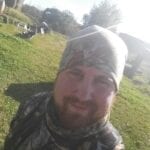 Bucks Of Wisconsin is Wisconsin’s exclusive hunting lifestyle apparel brand. Sharing the good life of Wisconsin outdoors through branded apparel.
Bucks Of Wisconsin is Wisconsin’s exclusive hunting lifestyle apparel brand. Sharing the good life of Wisconsin outdoors through branded apparel.
